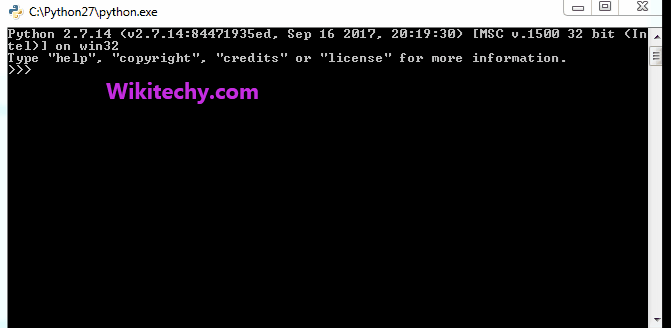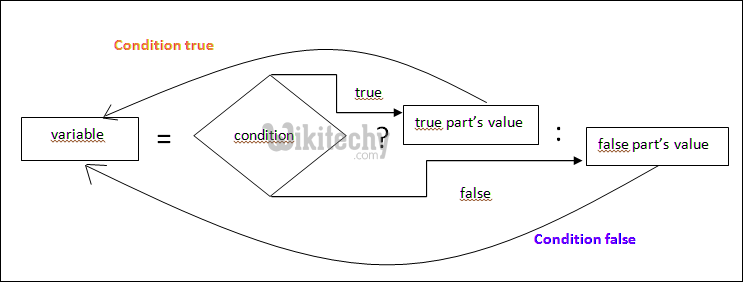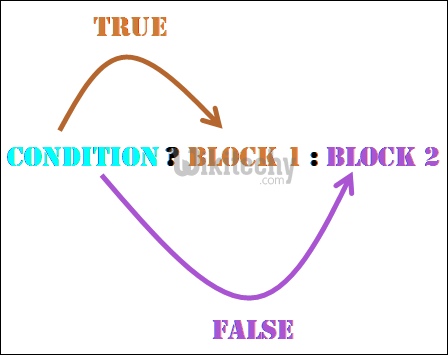
Learn Python - Python tutorial - python ternary operator - Python examples - Python programs
Ternary operators also known as conditional expressions are operators that evaluate something based on a condition being true or false. It was added to Python in version 2.5.

It simply allows to test a condition in a single line replacing the multiline if-else making the code compact.
Syntax :
[on_true] if [expression] else [on_false]- Simple Method to use ternary operator:
python - Sample - python code :
# Program to demonstrate conditional operator
a, b = 10, 20
# Copy value of a in min if a < b else copy b
min = a if a < b else b
print(min)python tutorial - Output :
10- Direct Method by using tuples, Dictionary and lambda
python - Sample - python code :
# Python program to demonstrate ternary operator
a, b = 10, 20
# Use tuple for selecting an item
print( (b, a) [a < b] )
# Use Dictionary for selecting an item
print({True: a, False: b} [a < b])
# lamda is more efficient than above two methods
# because in lambda we are assure that
# only one expression will be evaluated unlike in
# tuple and Dictionary
print((lambda: b, lambda: a)[a < b]())python tutorial - Output :
10
10
10- Ternary operator can be written as nested if-else:
python - Sample - python code :
# Python program to demonstrate nested ternary operator
a, b = 10, 20
print ("Both a and b are equal" if a == b else "a is greater than b"
if a > b else "b is greater than a")Above approach can be written as:
python - Sample - python code :
# Python program to demonstrate nested ternary operator
a, b = 10, 20
if a != b:
if a > b:
print("a is greater than b")
else:
print("b is greater than a")
else:
print("Both a and b are equal")python tutorial - Output :
b is greater than a

Important Points:
- First the given condition is evaluated (a < b), then either a or b is returned based on the Boolean value returned by the condition
- Order of the arguments in the operator is different from other languages like C/C++ (See C/C++ ternary operators).
- Conditional expressions have the lowest priority amongst all Python operations.

Method used prior to 2.5 when ternary operator was not present
In an expression like the one given below , the interpreter checks for the expression if this is true then on_true is evaluated, else the on_false is evaluated.
Syntax :
'''When condition becomes true, expression [on_false]
is not executed and value of "True and [on_true]"
is returned. Else value of "False or [on_false]"
is returned.
Note that "True and x" is equal to x.
And "False or x" is equal to x. '''
[expression] and [on_true] or [on_false]Example :
# Program to demonstrate conditional operator
a, b = 10, 20
# If a is less than b, then a is assigned
# else b is assigned (Note : it doesn't
# work if a is 0.
min = a < b and a or b
print(min)python tutorial - Output :
10Note : The only drawback of this method is that on_true must not be zero or False. If this happens on_false will be evaluated always. The reason for that is if expression is true, the interpreter will check for the on_true, if that will be zero or false, that will force the interpreter to check for on_false to give the final result of whole expression.
